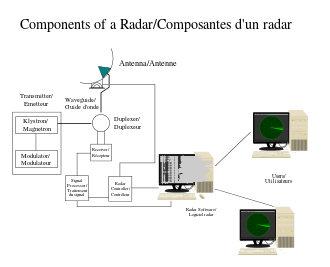RADAR MECHANISM AND USES
T have you ever imagined how a radar works and why it was firstly made.the term RADAR was coined in 1940 by the United State Navy as an acronym for RAdio Detection And Ranging or RAdio Direction And Ranging.
have you ever imagined how a radar works and why it was firstly made.the term RADAR was coined in 1940 by the United State Navy as an acronym for RAdio Detection And Ranging or RAdio Direction And Ranging.
Radar is an object-detection system that uses radio waves to determine the range, angle, or velocity of objects. It can be used to detect aircraft, ships, spacecraft, guided missiles, motor vehicles, weather formations, and terrain.
A radar system consists of a transmitter producing electromagnetic waves in the radio or microwavesdomain, a transmitting antenna, a receiving antenna (often the same antenna is used for transmitting and receiving) and a receiver and processor to determine properties of the object(s). Radio waves (pulsed or continuous) from the transmitter reflect off the object and return to the receiver, giving information about the object's location and speed.
The modern uses of radar are highly diverse, including air and terrestrial traffic control, radar astronomy, air-defence systems, antimissile systems, marine radars to locate landmarks and other ships, aircraft anticollision systems, ocean surveillance systems, outer space surveillance and rendezvous systems, meteorologicalprecipitation monitoring, altimetry and flight control systems, guided missiletarget locating systems, ground-penetrating radar for geological observations, and range-controlled radar for public health surveillance.High tech radar systems are associated with digital signal processing, machine learning and are capable of extracting useful information from very high noise levels.
Other systems similar to radar make use of other parts of the electromagnetic spectrum. One example is "lidar", which uses predominantly infrared light from lasers rather than radio waves.
the components of a radar and their ability to detect the return energy from moving scatterers — determining an object's position or obstruction in the environment.This includes field of view in terms of solid angle and maximum unambiguous range and velocity, as well as angular, range and velocity resolution. Radar sensors are classified by application, architecture, radar mode, platform, and propagation window.The angle of a target is detected by scanning the field of view with a highly directive beam. This is done electronically, with a phased array antenna, or mechanically by rotating a physical antenna. The emitter and the receiver can be in the same place, as with the monostatic radars, or be separated as in the bistatic radars. Finally, the radar wave emitted can be continuous or pulsed. The choice of the architecture depends on the sensors to be used.

Hi! I am a robot. I just upvoted you! I found similar content that readers might be interested in:
https://en.wikipedia.org/wiki/Radar